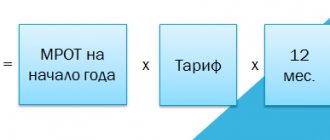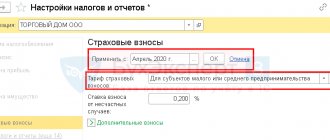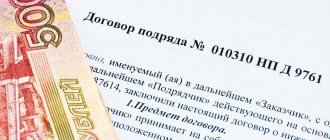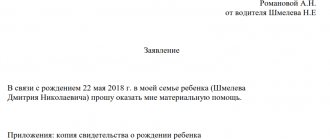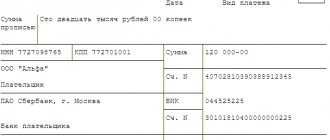The simplified taxation system is one of the most popular special regimes. It is used by small businesses - individual entrepreneurs and legal entities. Simplification provides a number of tax advantages. For example, there is no need to pay VAT. You can choose one of two options for calculating the tax base. In addition, tax accounting is significantly simplified.
From January 1, 2021, UTII has been abolished; it will no longer be possible to combine this tax regime with the simplified tax system. Entrepreneurs can try to combine the simplified tax system and a patent, but organizations will no longer have the opportunity to combine them. Choose the regime with the minimum tax burden using our free calculator. If you are going to transfer all your activities from UTII to the simplified tax system or another tax regime, read our article - we have collected answers to the most popular questions about the transition from imputation. Didn't find the answer to your question? Ask it in the comments, we will definitely answer.
What are the advantages of the simplified tax system?
The main advantage of the “simplified” system is that businesses do not need to pay VAT, which is 20% from 2021. Also, those organizations that use the simplified tax system do not pay income tax, with the exception of the tax paid on income from dividends and certain types of debt obligations.
Also, the simplified tax system provides a benefit for the property tax of organizations, that is, this tax is not paid. Moreover, from January 1, 2015, for individual entrepreneurs on the simplified tax system, there is an obligation to pay property tax in relation to real estate objects that are included in the list determined in accordance with clause 7 of Art. 378.2 Tax Code of the Russian Federation.
Besides:
- The simplified tax system does not require quarterly payments and declarations. Only one declaration needs to be submitted: for organizations - by March 31 of the year following the expired tax period, and for individual entrepreneurs - by April 30.
- At the “simplified” and at the “income” object and at the “income minus expenses” object there are advance payments. Tax must be paid in advance no later than 25 calendar days from the end of the reporting period.
- The tax at the end of the year is paid by organizations - no later than March 31 of the year following the expired tax period, individual entrepreneurs - no later than April 30 of the year following the expired tax period.
It is worth remembering that under simplified taxation you can choose between two objects of taxation - “income” or “income minus expenses” (Article 346.14 of the Tax Code of the Russian Federation). You need to make a choice right away, since simplified taxation system payers indicate the object during registration. At the same time, the object of taxation can be changed annually. Accordingly, if in 2019 you apply the simplified tax system “income”, then you will be able to switch to the simplified tax system “income minus expenses” only from 2021.
Application of reduced tariffs when combining modes
The law allows for combining a simplified taxation system and a special regime in the form of UTII. However, it was possible to pay insurance premiums when combining UTII and simplified tax system at reduced rates only in the period from 2021 to 2021. In 2021, the benefit ceased to apply. Now businessmen pay contributions at the generally established rate. Previously, the total share of insurance premiums of persons on the simplified tax system listed in Art. 427 of the Tax Code of the Russian Federation, and having revenue of no more than 79 million rubles per year, was 20%, now increased to 30%.
The following tariffs apply in 2021:
- in the Pension Fund of Russia - 22%;
- in the Social Insurance Fund - 2.9%;
- in the Federal Compulsory Medical Insurance Fund - 5.1%.
Reduced tariffs in the amount of 20% of contributions to the Pension Fund and 0% each to the Social Insurance Fund and the Federal Compulsory Medical Insurance Fund until 2025 can be applied by non-profit organizations that conduct socially significant activities in the field of public services, science, healthcare, sports, education and charity.
Limitations of the simplified tax system
As part of the “simplified” plan, there is an income limit. The income limit for individual entrepreneurs on the simplified tax system has not changed compared to 2021 - until January 1, 2021, the effect of the deflator coefficient is not taken into account. It is assumed that the income limit is 150 million rubles. will continue for 2021 and 2021.
The average number of employees is also taken into account - 100 people. The average annual cost of fixed assets is 150 million rubles.
“Simplified” applies to all types of activities, with the exception of lawyers, banks, insurance funds, pawn shops and other organizations listed in paragraph 3 of Art. 346.12 Tax Code of the Russian Federation.
The share of participation of other organizations in the capital structure should not exceed 25%.
What should shoe sellers do?
Let us separately consider the situation with the sale of shoes, which are subject to mandatory labeling.
An electronic signature for working in mandatory marking systems can be obtained within an hour Order a signature
Recently, the Ministry of Finance recognized that the possibility of using UTII when trading such goods remains until March 1, 2021 (letter dated November 28, 2019 No. 03-11-09/92662). However, now the “impossible” people who sell shoes need to make a decision about the future of this business. There are three options.
The first is to continue to apply UTII in the first quarter of 2021, and from March 1 to tax income from the sale of shoes within the framework of the general taxation system. With this option, no measures are required to be taken this year. No later than March 6, 2021, you will need to submit an application to deregister as a UTII taxpayer.
The second option is to transfer the relevant activity to the simplified tax system. In this case, you need to abandon UTII from January 1, 2021. You should also submit a notice of transition to the simplified tax system by the end of December 2021 (if the taxpayer has not previously sent such a document to the Federal Tax Service). In this case, it will not be possible to switch from “imputation” to “simplified” directly from March 1, 2021 - this is prevented by the provision of paragraph 1 of Article 346.28 of the Tax Code of the Russian Federation. Let us remind you that this norm allows UTII taxpayers to change the tax regime starting from the next calendar year. Accordingly, during the year the transition from UTII to the simplified tax system without cessation of the “imputed” type of activity is impossible.
A third option follows from this provision - to leave the retail trade of shoes on UTII until March 1, 2021, after which to completely “curtail” this business, continuing to apply the simplified tax system for the rest of the activity. In this case, those who are not yet a taxpayer of the simplified tax system must remember to submit a notice of transition to this special regime before December 31, 2021. And no later than March 6, 2021, you will have to send an application for deregistration as a UTII taxpayer in connection with the termination of the relevant activity from 03/01/2020.
simplified tax system “income” in 2021: advantages
For the simplified tax system “income” the rate is 6%. That is, in this case, costs do not play any role. Only income is taken into account in the tax base and is multiplied by 6%. In this case, the tax can be reduced.
An organization or individual entrepreneur with hired employees can reduce tax by 50%. According to clause 3.1 of Art. 346.21 of the Tax Code of the Russian Federation, the tax is reduced:
- the amount of insurance contributions for compulsory pension insurance, compulsory social insurance in case of temporary disability and in connection with maternity, compulsory health insurance, compulsory social insurance against industrial accidents and occupational diseases paid in a given tax period;
- the amount of expenses for payment of temporary disability benefits for days of temporary disability of the employee, which are paid at the expense of the employer (with the exception of industrial accidents and occupational diseases);
- for the amount of payments (contributions) under voluntary personal insurance contracts.
Individual entrepreneurs who do not provide compensation to individuals reduce the amount of tax on insurance premiums paid for compulsory pension insurance and compulsory health insurance.
Another advantage of individual entrepreneurs using the simplified tax system “income” is rare checks. Using this “simplification” is beneficial for those whose share of expenses is less than 60% of the total.
Benefits of special modes
The tax legislation of the Russian Federation provides for a number of concessions when conducting business. In particular, the financial burden on an entrepreneur can be reduced by using special regimes - simplified tax system or UTII. Both of these systems exempt a businessman from the obligation to pay VAT, personal income tax on business proceeds, and property tax on objects used in commercial activities (clause 3 of Article 346.11, clause 4 of Statute 346.26 of the Tax Code).
At the same time, an individual entrepreneur under a special regime must accrue and pay tax to the budget on simplified or imputed activities. Both systems are voluntary and are used on a notification basis. Restrictions on use are listed in stat. 346.12, 346.26. Tax accounting for UTII (STS) is carried out in a simplified manner and comes down to submitting a declaration based on the results of tax periods. When calculating the amount of tax payable, it is allowed to make tax deductions for the transferred insurance premiums for employees, except for the simplified tax system for “Income minus expenses.”
What you need to know about UTII
This special regime is beneficial for many organizations, but it will only apply until 2021.
For UTII, it doesn’t matter how much you earn - there is no maximum limit. But imputed income is important, which is calculated according to the rules prescribed in Art. 346.29 of the Tax Code of the Russian Federation: calculated as the product of the basic profitability for a certain type of business activity, calculated for the tax period, and the value of the physical indicator characterizing this type of activity. This is what needs to be paid.
Payers of UTII can reduce the amount of tax calculated for the tax period by the amounts of payments and benefits that were paid in favor of employees employed in those areas of activity for which a single tax is paid. In this case, the amount of reduction cannot exceed 50% of the calculated tax.
An individual entrepreneur without employees has the right to reduce the amount of UTII by the amount of insurance contributions paid (for himself) in a fixed amount to compulsory health insurance and compulsory medical insurance without applying the 50% limit.
Are you switching from UTII? Connect Kontur.Accounting
45% discount in November: RUR 7,590 instead of 13,800 rub. per year of work
Easy bookkeeping
The system itself will calculate taxes and remind you of the deadlines for payments and submission of reports.
Automatic calculation of salaries, vacation pay and sick leave
Technical support 24/7, tips inside the service, reference and legal database
Sending reports via the Internet
Reports and KUDiR are generated automatically based on accounting data
Electronic document management and quick verification of counterparties
Documents, transactions, analytical reports, VAT reconciliation
But if your company is engaged in several types of business at the same time, the simplified tax system may not be profitable for certain areas. In this case, it is allowed to combine the simplified tax regime with another special regime, under which a single tax on imputed income is paid. The list of possible types of activities on UTII is given in paragraph 2 of Article 346.26 of the Tax Code of the Russian Federation. The main advantage of the regime is the absence of a relationship between the tax and real income. The amount to be paid to the budget is calculated based on imputed income. This is the estimated amount of income from a certain type of activity. Before combining special modes, evaluate whether such a combination will have a positive effect. We talked about how to find out the benefits of using the simplified tax system and UTII here.
Who benefits from using UTII and why?
UTII is beneficial for those who are engaged in retail, catering, provide household services, as well as transportation services.
Organizations and individual entrepreneurs on UTII providing services to the population, as well as individual entrepreneurs on UTII without employees, engaged in retail and catering, received a deferment on the use of online cash registers until July 1, 2021. This is one of the reasons why many switched to UTII - to save money. However, UTII has limitations:
1. If there is no limit on revenue, then there is one on the number of personnel - no more than 100 people.
2. For UTII in Art. 346.29 of the Tax Code of the Russian Federation and Art. 346.26 of the Tax Code of the Russian Federation specifies certain types of activities:
- retail;
- public catering;
- household and veterinary services;
- repair, maintenance and washing services for motor vehicles;
- distribution, advertising placement;
- services for the temporary use of trading places and land plots;
- temporary accommodation and accommodation services;
- services for the transportation of passengers and goods by motor transport;
- parking services.
3. The share of participation of other legal entities is no more than 25%. If a share in the authorized capital of an organization is sold to another legal entity and its share exceeds 25%, then it will automatically transfer to the OSN.
Also, for UTII there are no limits on the cost of fixed assets.
How can tax systems be combined?
Organizations can combine the simplified tax system and UTII (clause 4 of article 346.12).
An individual entrepreneur can combine the simplified tax system and UTII, the simplified tax system and PSN, and even the simplified tax system with UTII and PSN.
But before you seriously engage in combination, it is worth calculating optimization. When choosing one or another tax regime, calculate the tax burden - this will allow you to understand the benefits.
It is often more profitable for individual entrepreneurs to use the simplified tax system of 6% and combine it with PSN or UTII.
For organizations involved in retail, it makes sense to use UTII.
Why is it necessary to combine special modes at all? Imagine that your organization is engaged in retail, that is, it has several stores that operate on UTII. But since UTII only applies to certain types of activities, tax authorities often try to prove that you sold goods to a legal entity, which is already considered wholesale trade. Therefore, on the amount received for selling goods to a legal entity, you need to pay tax under the OSN.
To avoid such situations, organizations almost always write an application to the simplified tax system at the same time as the UTII. Please note: new organizations can switch to the “simplified” system within 30 days, while existing organizations can only switch to the “simplified” system from the beginning of the year. Therefore, if you are currently on UTII, then in the middle of the year you will no longer be able to switch to the simplified tax system; this can only be done starting next year.
Organizations engaged in trade very often combine UTII with the simplified tax system “income”, and not “income minus expenses”. Accordingly, they divide the indicators. Which ones exactly?
First of all, income.
For “simplified” there is an income limit of no more than 150 million rubles, so income must be divided clearly. Moreover, in Art. 346.13 of the Tax Code of the Russian Federation states that income from UTII is not included in the maximum limit. What can be done in this case?
- The best thing is to divide the income using accounting. That is, create separate accounts in accounting: income within the framework of the “simplified tax” and income within the framework of UTII.
- Divide revenue based on receipt reports. When using cash registers, the required check details are the taxation system that was used in the calculation. Accordingly, UTII will appear on one check, and “simplified” on the other.
- Divide by payment types. For example, everything that comes in “simplified” is by bank transfer, and everything that is in retail is through cash register, etc.
Often organizations switch to the simplified tax system for “income” precisely because expenses in this case are not important and there is no need to divide expenses according to different taxation systems.
If they choose UTII and simplified tax system “income minus expenses”, then expenses must be divided without fail: separately take into account what belongs to UTII, separately what belongs to simplified tax system, and separately maintain general business expenses.
But even when combining the simplified tax system “income” and the simplified tax system “income minus expenses”, the number of employees is necessarily divided. This is important because the UTII includes types of activities where people are the physical indicator - for example, household services. Therefore, you need to determine who will pay and who will not.
On UTII and “simplified” taxes, the tax is reduced by insurance premiums. Therefore, it is necessary to divide insurance premiums.
Specifics of division
Questions often arise with division. Let's say there is an organization that is engaged in wholesale trade. In addition to this, she also does renovations. Repairs are classified as household services, so the organization switched to UTII. For household services on UTII, the physical indicator is people. Therefore, those who repair must pay UTII.
Nadezhda Samkova, a leading expert consultant on taxation and presenter of the webinar “Combining the simplified tax system with other tax regimes: UTII, patent,” notes that the division by people should be made by employment contracts and time sheets. This way it will be clear that, for example, employee Ivanov repairs for such and such an amount, and only UTII needs to be paid from him. And the other employee - Petrov - is engaged only in wholesale trade and he does not play any role in UTII.
Thus, if an organization combines the simplified tax system and UTII, the number of employees who belong to different areas of activity can be distributed. But if the same employees participate in activities both on the “simplified” and on UTII, it is impossible to divide their number by different types of activities. Such employees need to be fully taken into account.
Difficult situations arise with such employees as the director and accountant. And in companies that, for example, have two repairmen and two wholesale trade specialists, as well as a director and an accountant, they ask themselves the question: for how many people should they pay UTII? According to the explanations of the Ministry of Finance, when combining the simplified tax system and UTII, administrative and managerial personnel are not divided. Therefore, in this case, the tax authorities will force you to pay for two repairmen, as well as for the director and accountant.
Understanding the number of employees is important primarily because of the need to divide insurance premiums.
Another example: the company has wholesale and retail. For retail, the physical indicator on UTII is area. Therefore, if you have a store with an area of 150 sq. m, you need to pay UTII. But a director can work in the same store and engage in wholesale trade. In this case, can you pay UTII not on the area, but in proportion to the revenue? The answer to this question is contained in the Letter of the Ministry of Finance dated September 11, 2012 No. 03-11-11/276: “The area of the trading floor is recognized as the part of the store, pavilion, occupied by equipment intended for displaying, demonstrating goods, conducting cash payments and servicing customers, the control area - cash registers and cash booths, the area of work places for service personnel, as well as the area of aisles for customers. The area of the trading floor also includes the rented part of the trading floor area. The area of utility, administrative and amenity premises, as well as premises for receiving, storing goods and preparing them for sale, in which customer service is not provided, does not apply to the area of the trading floor.” And one more thing: the procedure for distributing the area of a sales floor (or part of it) when carrying out on it simultaneously a business activity taxed under the simplified tax system and a business activity in respect of which UTII is paid and the area of the sales floor is used as a physical indicator is not defined by the Tax Code.
Significance of accounting policies and distribution of insurance premiums
Since the mechanism for maintaining separate accounting is not clearly stated in the Tax Code, when combining regimes it is important to formulate an accounting policy. The wording can be taken from clause 8 of Art. 346.18 and paragraph 7 of Art. 346.26 of the Tax Code of the Russian Federation, as well as improve accounting. To simplify the process, use a special accounting policy creation wizard.
In the accounting policy, first of all, it is necessary to prescribe a mechanism for maintaining separate accounting for taxation. In Art. 346.18 and art. 346.26 of the Tax Code of the Russian Federation specifies that if the same expenses relate to different taxation systems, then these expenses must be divided in proportion to the income from these types of activities in the total.
Let’s say an organization combines “simplified” and “imputed”, the main employees work in different types of activities, but the accountant maintains both the simplified tax system and the UTII. The salary of this accountant is 35,000 rubles. Income from “simplified” is 300,000 rubles, and income from UTII is 100,000 rubles. If the special simplified tax system “income minus expenses” regime is used, then the whole 35,000 rubles cannot be paid. take the accountant's salary in simplified form. It is necessary to determine the share of “simplified” in the total mass, and only within this share take the amount for expenses.
To calculate the share, income received from the “simplified tax regime” is taken and divided by the total amount of income from both taxation regimes. Thus, for the example given, the share of “simplified” will be 75%, and the share of UTII will be 25%.
Then, to determine the share of the accountant’s salary according to the simplified tax system, his salary must be 35,000 rubles. multiply by 75% (0.75) - it turns out 26,250 rubles. The share of the salary for “imputation” is determined by multiplying 35,000 rubles. by 25% (0.25) - it turns out 8,750 rubles.
Insurance premiums from these amounts will be charged to expenses for the relevant types of activities.
Another example is that an individual entrepreneur pays fixed contributions for compulsory pension insurance in the amount of 29,354 rubles. Every year. If the income of an individual entrepreneur is more than 300,000 rubles, then the fixed amount is 29,354 rubles. + 1% of the amount of income exceeding RUB 300,000. How can an individual entrepreneur reduce fixed payments?
If an individual entrepreneur on UTII combines UTII and “simplified” tax, and hired employees work only on UTII, then you need to build on the Letter of the Federal Tax Service dated May 29, 2013 No. ED-4-3/ [email protected] , which states that an entrepreneur who combines The simplified tax system with the object “income” and UTII can reduce the tax under the simplified tax system by the entire amount of insurance premiums paid for itself if it attracts workers only to carry out activities transferred to UTII.
There is also a Letter from the Federal Tax Service dated August 10, 2017 No. 03-11-11/51316, the meaning of which is that insurance premiums that go to different regimes are divided in proportion to income. The Letter of the Federal Tax Service dated December 5, 2014 No. GD-4-3/25258 states that if you combine “simplified taxation” and UTII without employees, then you can send the payment wherever you want. But a problem arises: according to the simplified tax system, an individual entrepreneur pays tax at the place of residence, and according to UTII - at the place of business, and these can be different places. Therefore, it is better to include a fixed payment in any taxation regime, and take 1% into account in UTII and in the simplified tax system, so that there are no problems with the tax inspectorate.
If you have employees, then both the UTII and the simplified tax system can be reduced by only 50%. Until 2021, the rule worked: you could reduce the tax on UTII only for employees, but not for yourself. However, starting from 2021, this rule does not work - now individual entrepreneurs can reduce taxes both for themselves and for employees.
If you combine the simplified tax system “income minus expenses” with UTII, insurance premiums will be reduced by UTII, and in the “simplified tax” they will go to expenses. Therefore, you need to share the costs.
Tax reductions for the “profitable” simplified tax system and UTII with employees
Organizations and individual entrepreneurs with employees can reduce the amount of imputed and simplified taxes by half due to insurance premiums paid for themselves and for employees. However, when combining UTII and simplified tax system “income”, some features arise:
- If employees are engaged only in imputed activities. In this case, due to the contributions paid for all employees, the imputed tax can be reduced by 50%. The simplified tax system is reduced without restrictions due to contributions paid for individual entrepreneurs.
- If employees are engaged only in simplified activities. Then you can reduce the tax under the simplified tax system by up to half due to contributions for employees. In this case, UTII can be reduced by individual entrepreneurs’ contributions for themselves.
- If employees participate in all types of activities. Then both the imputed and simplified tax can be reduced by half according to the limitation. The simplified tax system is based on contributions paid for employees and individual entrepreneurs. UTII - from contributions paid for employees. The amount of contributions paid for employees is divided taking into account the distribution of employees according to the applicable regimes, and if this is not possible, in proportion to income.
Division of non-operating expenses
One of the private questions is where to send non-operating income - to the “simplified” or to the “imputed” income. They can be divided. But there is a Letter from the Ministry of Finance dated January 29, 2016 No. 03-11-09/4088 and a Letter from the Ministry of Finance dated December 19, 2014 No. 03-11-06/2/65762 - they say that non-operating income, which you do not understand what type activities are required to be taken into account in the simplified tax system.
When distributing general expenses, you need to pay attention to Letter of the Ministry of Finance dated November 23, 2009 No. 03-11-06/3/271. It spells out the mechanism for generating general expenses.
